The Munchkin
The Munchkin is a short-legged cat. This is a relatively new breed of cat whose typically short legs are caused by a naturally occurring genetic mutation.
Standard and non-standard Munchkin
The Munchkin is, of course, known for its small legs, which is what we call a munchkin. standardBut you should know that in a litter, only half of the kittens (on average) are born with short legs, and the other half have completely normal legs, a munchkin. non-standard.
Of course, both standard and non-standard dogs have the same temperament characteristics, i.e. a real dog/cat that's very close to its humans!
Unfortunately, munchkins are mostly sought after for their funny basset look, and most people are unaware that they also come in a long-legged version, so the non-standard ones are often overlooked, which is a shame because they are just as cute and funny as their standard brothers and sisters!
The history of the Munchkin
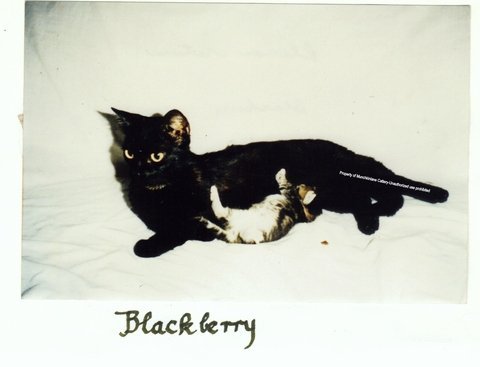
There was much controversy surrounding the breed when it was first recognised by the International Cat Association (TICA) in 1995, with critics expressing concern about potential health and mobility problems. We now know that these concerns were unfounded and that the size of the Munchkin's legs has absolutely no effect on its mobility and does not predispose it to any arthritic or other type of disease. On the contrary, this is a very healthy breed that is free from the genetic diseases known to affect other breeds.
Fun fact: The name "munchkin" derives from the tiny inhabitants of writer L. Frank Baum's Munchkin Country, which originated in the 1900 novel The Wonderful Wizard of Oz : The Wizard of Oz.

Short-legged cats can be traced back to the 1930s in England. Reports indicate that these short-legged cats survived for more than four generations before the Second World War wreaked havoc on the cat population in Europe.
However, today's Munchkin breed began in Louisiana. In 1983, music teacher Sandra Hochenedel found two female cats trying to escape a bulldog hiding under a van. She rescued them, brought them home and then realised that they were both short-legged and pregnant. She gave one away but kept the other, a black cat called Blackberry.
After Blackberry had her first litter, Sandra gave one of the kittens to her friend Kay LaFrance, who also lived in the Louisiana town of Monroe. LaFrance's cats had free access to the outdoors and were not sterilised, which meant that a feral population of Munchkins quickly formed around Monroe. These Munchkins apparently competed very well with the long-legged cats for prey and mating opportunities.
Sandra and Kay then decided to contact Dr Solveig Plflueger, Chair of TICA's Genetics Committee. She determined that the short legs were the result of a dominant genetic mutation affecting the long bones of the legs, similar to bassets or dachshunds in dogs. The mutation itself apparently occurred spontaneously in the feline gene pool.
A miniature cat?
No, absolutely not!
The munchkin is a short-legged cat, so its height is of course different from that of other cats, but on the other hand, it is absolutely not a featherweight, or even less a cat that remains a kitten as you may sometimes hear.
Its adult weight is that of a "normal" cat, and will easily be between 3 and 5 kilos.
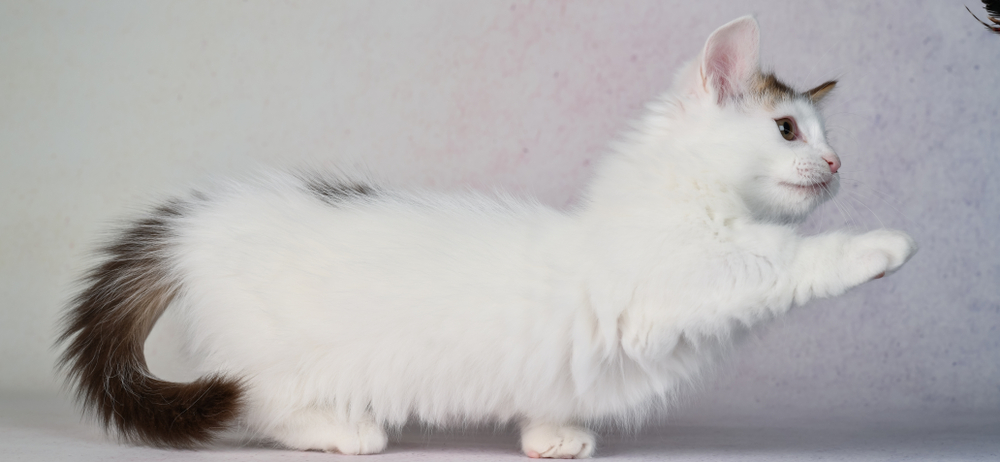
Features and Standards
Although the breed was initially selected from non-pedigreed cats, it has since been enriched by the addition of various breeds. However, it is important that the Munchkin's type remains moderate, close to that of the European Shorthair. The head is in the shape of a softened triangle. The nose is usually straight. The walnut-shaped eyes are set at an angle. The ears are medium-sized, broad at the base and set fairly far apart. Semi-foreign, the body is medium to large and rectangular. Short and strong, the legs should be as straight as possible, with medium bone and good musculature. The tail is of medium length and tapers to a rounded tip. There are two varieties of Munchkin: short-haired and long-haired. All coat colours are permitted.
At Envol Munchkin, we work mainly with longhairs, trying to have a wide range of colours. We are also looking for blue eyes, either on point cats or on coloured & white cats, which is much rarer.
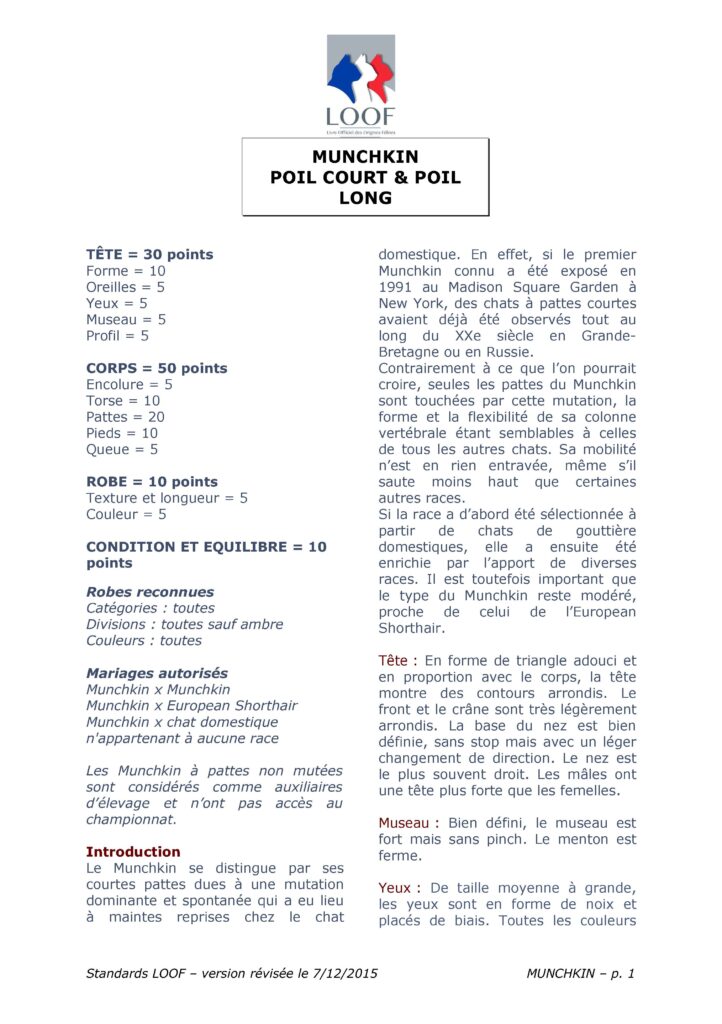
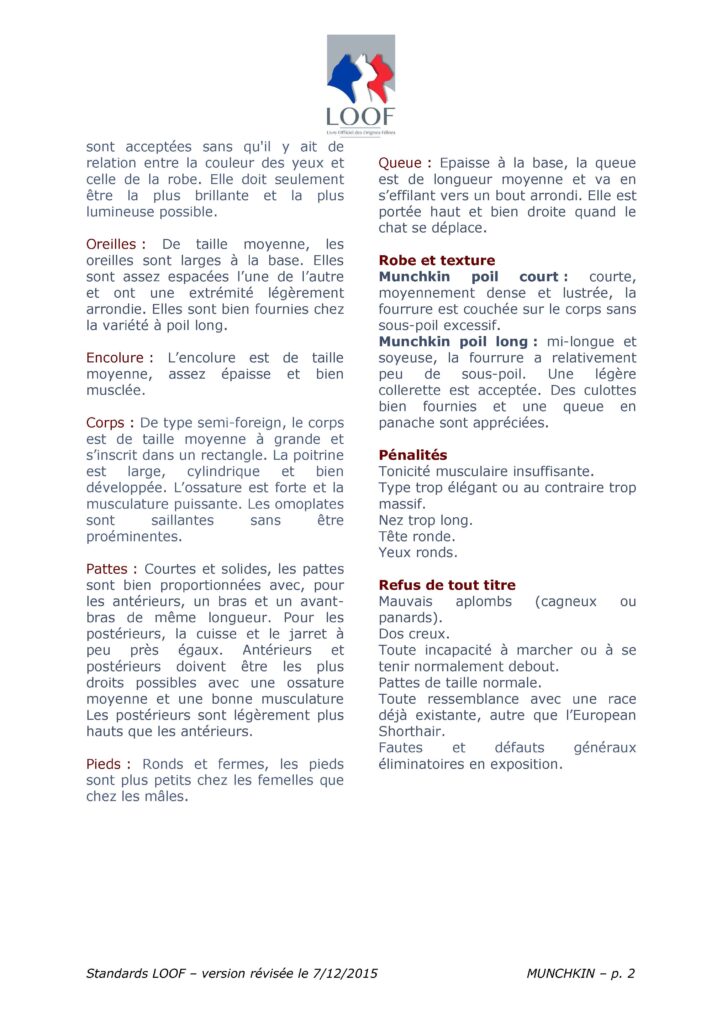
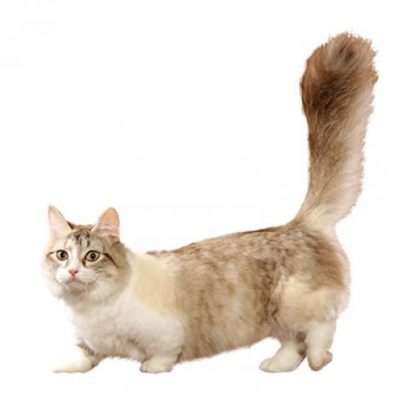
Munchkin temperament
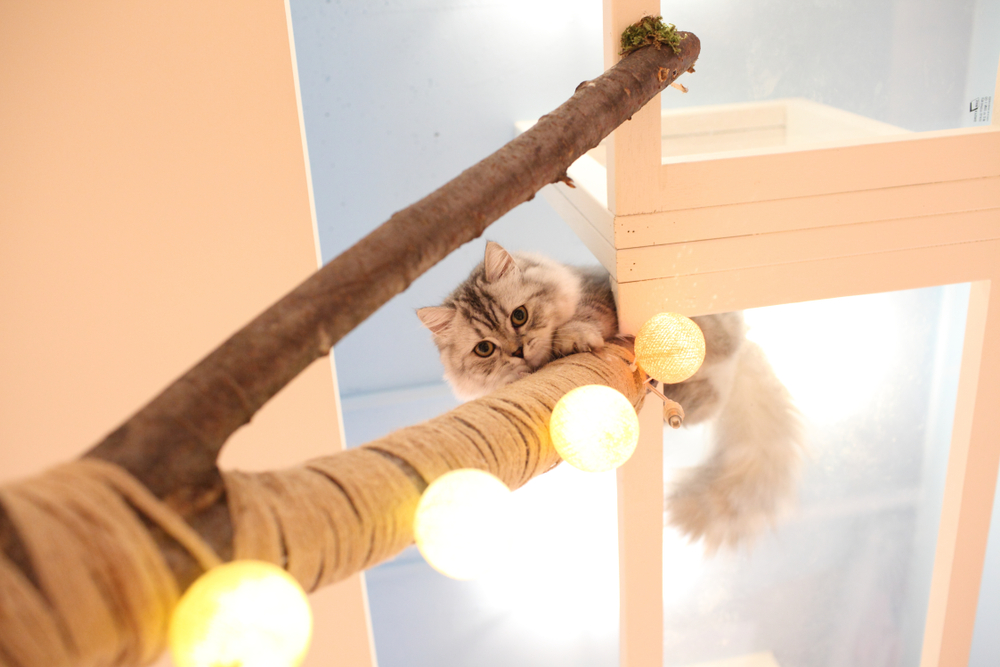
The Munchkin is in fact a very active cat, who loves to run and play with everything he finds. They are renowned for retaining their kitten-like character even into adulthood. It is playful and friendly with other animals. The Munchkin is a very endearing, energetic and playful animal. It's also a sociable cat that gets on well with other cats and dogs alike, and is very patient with children. That said, Munchkins like to be respected. It's important to respect the signals your cat sends you.
Munchkins are very close to their owners and show them great affection. He is always very gentle and affectionate, and will not hesitate to crawl into his owners' laps. They do not like to be alone. It's best for him to have a companion to ensure he has a constant presence and to satisfy his need to play.
Genetics
The munchkin gene is autosomal dominant . The embryos homozygous for the munchkin gene are not viable because of gene lethality and do not develop in the uterus. Only kittens heterozygotes for the munchkin gene develop into viable short-legged munchkin kittens. Because only heterozygous munchkin cats are able to pass on the gene, all litters with at least one munchkin parent have the possibility to contain kittens with the phenotypes: short-legged or normal-legged (called non-standard munchkin), with the genotypes of Mm or mm, where M is the trait for short legs and m is the trait for long legs. Mating two Munchkin parents, Mm x Mm, has the chance to produce these offspring: 25% MM - a non-viable kitten, 50% Mm - short legs, 25% mm - normal. The resulting litter will be 2/3 mm short legged and 1/3 mm normal.
Punnett squares where M represents the dominant munchkin gene and m represents the recessive normal gene, can be used to illustrate the chances of a particular mating resulting in a short-legged cat.
Kittens carrying two copies of the munchkin gene ( MM ) will not develop in the uterus. Kittens carrying one munchkin gene and one normal gene ( Mm ) will be short-legged munchkins. Kittens carrying two normal genes ( mm ) will be normal. Mm munchkin kittens will be able to pass on the munchkin gene to their own offspring. Normal mm kittens will not, as they do not have a copy of the munchkin gene.

Coupling two standard munchkins :
For each kitten conceived from this mating, there is a 25% chance that it will not develop, a 25% chance that it will be normal and a 50% chance that it will be short-legged.

Coupling a standard munchkin with a non-standard munchkin :
For each kitten conceived from this mating, there is a 0% chance that it will be homozygous for the munchkin gene, a 50% chance that it will be normal and a 50% chance that it will be munchkin.
Interested in adopting a munchkin kitten?
Come and see if we have any kittens available at the moment.

